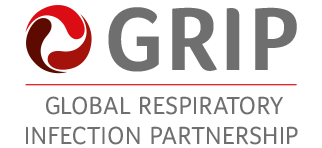Global Learnings and Strategy
Global Learnings and Strategy
Antibiotic Use in Respiratory Tract Infections : Global Learnings for Healthcare Professional Education
- Antibiotic resistance may erroneously be being perceived as a hospital problem, rather than a joint hospital/community issue.
- Healthcare professionals may not be aware that antibiotic use can contribute to the presence of resistant bugs for the next 12 months in an individual.
- Up-to-date data of local prescribing rates can identify and counter disparities in prescribing rates from different regions, within practices and between individual prescribers.
- Annotating antibiotic prescriptions with indications can identify physicians prescribing inappropriately and may allow pharmacists the opportunity to engage with doctors on appropriate use.
- Mandatory Continuing Professional Education on antibiotic use should be implemented.
- Patients should be given information on the risks of antibiotics: resistance and adverse effects.
- Interventions designed to reduce antibiotic prescribing, even in countries with low rates, often show a positive effect.
- Incentivising doctors, pharmacists and allied healthcare professionals to undertake antibiotic education or follow guidelines could be of merit.
Targeting Antibiotic Use
Without concerted action there will be a crisis of care and a reversal of the medical advances made in the latter half of the 20th century. Dr Duerden warned that common health interventions could be adversely affected: “We won’t be able to treat cancer as chemotherapy will be too dangerous and people will die. We won’t be able to do neonatal surgery or hip replacement operations.”
Dr van der Velden pointed out that the consequences already exist now.
“Infection with resistant bugs leads to more severe disease, longer duration of illness, higher risk of complications, hospitalisation, death and higher costs”
Awareness, policy and mechanisms to address antibiotic resistance differ markedly between countries. A framework is needed to allow each country to work within defined parameters that can be localised to meet specific needs. Respiratory tract infections are one of the leading conditions where antibiotics are used inappropriately. As such, respiratory tract infections will be the focus for GRIP, with sore throat as the pilot condition highlighted within framework discussions.
It was agreed that a respiratory tract infection framework must encompass several distinct areas, all of which advance an underlying public health proposition (see below):
Areas for Inclusion in a Respiratory Tract Infections Framework
- Policy on antibiotic resistance that promotes prudent antibiotic use and encourages symptomatic relief of respiratory tract infections.
- Prevention of resistance by providing guidelines when antibiotics are appropriate to use.
- Prescriber guidance on actions to take and how to communicate with patients.
- Pharmacists’ role in educating patients on symptomatic relief and when to consult the doctor.
- Patient participation to encourage empowerment and appropriate symptomatic management.
Creating a Policy
Policy needs to be driven by the requirement to create an environment where antibiotic use for respiratory tract infections is not the norm. To this end, commitment from local government is required to put in place disincentives to antibiotic use alongside guidance that encourages and promotes self-management by symptomatic care as the primary treatment.
Working with national authorities to encourage their commitment is a challenge as there is a diversity of needs between countries. Prof. Kozlov commented that an evidence-based approach facilitated partnership, while Prof. Essack proposed working with leading figures in antibiotic resistance from national societies to help leverage discussions.
Guidance by means of a policy brief to secure buy-in from decision makers at a country level was also suggested by Prof. Essack. This could be supplemented by materials for use in clinical practice that promote a non-antibiotic, pro-symptomatic relief approach.
A further issue lies in cascading engagement from national societies down to those in primary care who are prescribing or selling antibiotics, said Dr van der Velden. In many developing countries, such as those in Africa, data may not exist for all respiratory tract infections, while even in developed countries, such as Ireland, there are a dearth of reliable, updated antibiotic resistance data. “Most developing countries have standard treatment guidelines and essential drugs lists mooted by the World Health Organization but mandatory only in the public health sector,” pointed out Prof. Essack.
As part of the framework, a summary of the evidence of the effects of respiratory tract infection is required, with sore throat the initial respiratory tract infection of focus. Taking this condition as the pilot, Prof. Altiner said evidence is the first criteria and dismissed recommendations for patients to have honey and lemon or hot drinks to ease sore throats. “These are all areas where there is no evidence. A hot drink can induce pain.”
Prof. Pignatari countered that sore throat was a mild disease with mild pain. What was important was efficacy and determining which drug was safe for the pharmacist to give.
“Aspirin is not [safe], ibuprofen is safer and a local treatment is safer than a systemic”
Prof. Altiner added that the challenge lay in the range of drugs and formulations available. He suggested that therapeutic approaches used for other conditions, such as hypertension, should be adopted. “There are a lot of drugs, so try different ones. It’s trial and error for the patient.”
In terms of a first-line recommendation for sore throat, Dr Duerden believed individual preference was key. Dr Noonan added that doctors needed information on what each product contained in order to be able to guide a discussion on individual preference. She added that guidance was also needed for doctors on symptomatic relief recommendations for pregnant women and children under the age of six years.
